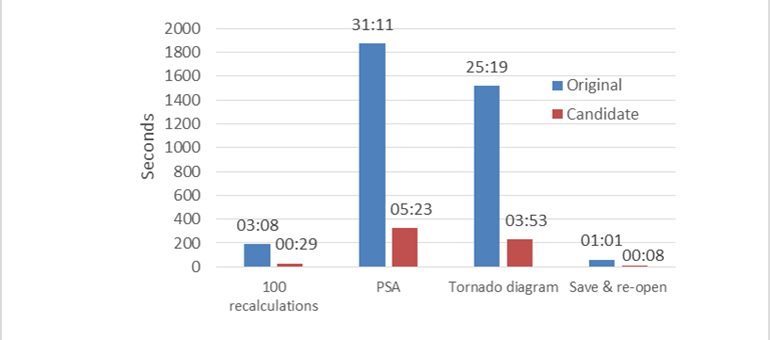Bringing an Excel based cost-utility model up to speed
Pharmaco-economic models for reimbursement submission and HTA are mainly developed using Microsoft Excel. Models are becoming increasingly complex in order to facilitate the different analyses requested by authorities. Furthermore, in the Nordic countries, models need to be submitted together with a health economic report.
Most people working hands on with pharmaco-economic analysis probably have had the experience of working with a complex cost-utility analysis in Excel and know how (lack of) calculation speed affect you in the hectic days before submission of a reimbursement dossier.
In a recent project, we supported Bristol-Myers Squibb with a third-party quality check. Apart from the standard evaluation of technical aspects (incl calculation consistency, and input data verification), it was important for BMS that the model should be associated with a good user experience especially for authorities using the model as part of the submission review.
The disease and the treatments being modelled required that the model was designed to incorporate a large number of comparators and a menu of different methods to calculated transition probabilities. Calculation speed therefore was an issue.
As a part of the project - and within the timeframe set aside for QC - we implemented a limited number of changes and could return a slightly modified version of the model with an impressing 85% decrease in computation time. E.g., we were able to bring the time spend on a reasonably sized PSA down from 31 to 5 minutes, and saving/reopening down from 61 to 8 seconds.
Ensuring health economic models are virtually ‘bug-free’ is always a challenge with increasingly complex model structures. However it is of utmost importance as they are being submitted to multiple HTA authorities alongside the reimbursement dossier. Not only did Wickstrøm & Langkilde ApS provide a very thorough, high quality and solution-orientated QC of a complex, global cost-utility model in record time but they also managed to improve calculation speed significantly. We are extremely pleased with this outcome and are sure our local affiliates and HTA authorities will be, too
Associate Director, World Wide HE&OR, Bristol-Myers Squibb

